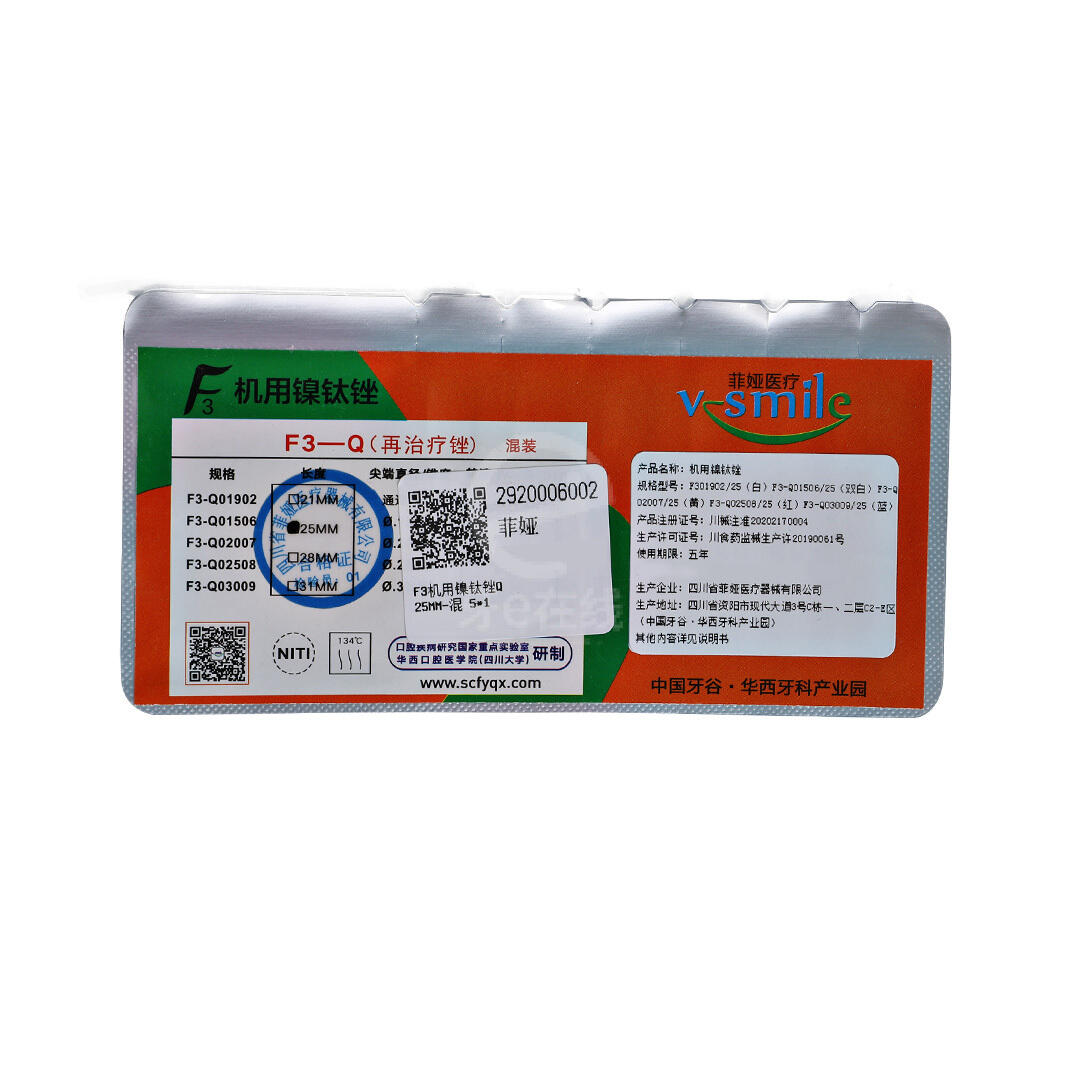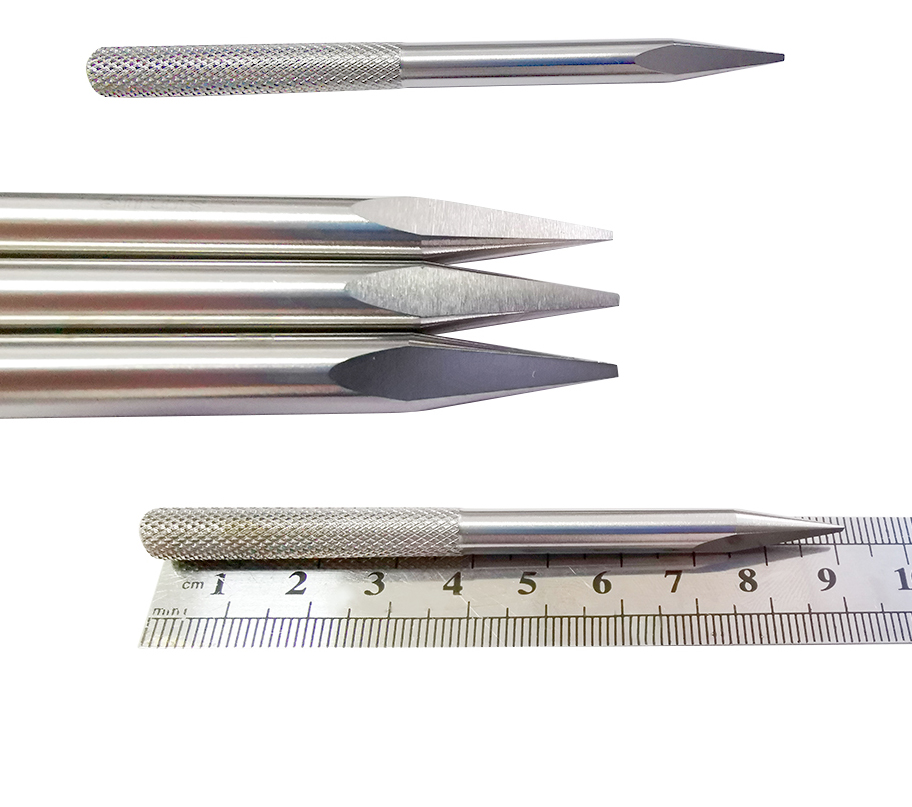Understanding the Evolution of Modern Dental Instruments
The dental industry has witnessed remarkable advancements in instrumentation, particularly in the realm of needle files used for endodontic procedures. These precision instruments play a crucial role in successful root canal treatments and dental procedures. As technology progresses, dental professionals face an important choice between traditional stainless steel needle files and the more recent nickel-titanium (NiTi) alternatives.
Material Properties and Performance Characteristics
Stainless Steel Properties
Stainless steel needle files have been the industry standard for decades, known for their exceptional strength and durability. These instruments offer excellent cutting efficiency and maintain their sharpness through multiple uses when properly maintained. The rigid nature of stainless steel provides dentists with enhanced tactile feedback during procedures, allowing them to better sense canal anatomy and potential obstacles.
The material's inherent stiffness makes stainless steel needle files particularly effective in creating straight-line access and negotiating calcified canals. However, this same rigidity can present challenges when working with curved root canals, potentially leading to procedural errors such as ledging or transportation.
NiTi Advantages and Characteristics
Nickel-titanium needle files represent a significant leap forward in endodontic instrumentation. The superelastic properties of NiTi allow these files to bend and flex without permanent deformation, making them ideal for navigating curved root canals. This unique characteristic, known as shape memory, enables the files to return to their original shape after being stressed.
NiTi files demonstrate superior flexibility and resistance to cyclic fatigue compared to their stainless steel counterparts. This translates to better preservation of canal anatomy and reduced risk of file separation during procedures. The material's elasticity also allows for larger tapers in file designs while maintaining flexibility, enabling more efficient canal shaping.
Clinical Applications and Technique Considerations
Optimal Uses for Stainless Steel
Stainless steel needle files excel in specific clinical situations where strength and control are paramount. They remain the preferred choice for initial canal negotiation and establishing glide paths, particularly in calcified or narrow canals. The superior tactile feedback offered by stainless steel makes these files invaluable for experienced clinicians who rely on their sense of touch to navigate complex canal systems.
In cases requiring significant coronal flaring or when dealing with particularly resistant dentin, stainless steel needle files provide the necessary rigidity and cutting efficiency. Their durability makes them cost-effective for practices, as they can withstand multiple sterilization cycles while maintaining their cutting effectiveness.
NiTi Applications
NiTi needle files shine in situations involving curved canals or complex root morphology. Their flexibility allows for better maintenance of original canal shape and reduced transportation, particularly in the apical third of the root. The reduced risk of file separation and superior fatigue resistance make NiTi files especially valuable in challenging cases where multiple directional changes are present.
Modern NiTi files often incorporate advanced metallurgy and manufacturing processes, resulting in improved cutting efficiency and reduced procedural time. Their ability to maintain canal centricity while creating larger preparations has revolutionized the approach to root canal therapy.
Economic and Practical Considerations
Cost Analysis
While initial costs for NiTi needle files typically exceed those of stainless steel instruments, the investment often proves worthwhile when considering the broader clinical picture. NiTi files can reduce procedure time and minimize the risk of complications, potentially offering better long-term value despite higher upfront costs.
Stainless steel needle files present a more economical initial investment and demonstrate excellent longevity with proper care and maintenance. Their durability and resistance to wear make them a cost-effective choice for many dental practices, particularly those performing a high volume of endodontic procedures.
Maintenance and Sterilization
Both types of needle files require careful attention to maintenance protocols to ensure optimal performance and longevity. Stainless steel files are generally more forgiving in terms of sterilization procedures and can withstand repeated autoclave cycles without significant degradation of their mechanical properties.
NiTi files demand more precise handling and sterilization protocols to maintain their unique properties. Regular inspection for signs of wear or deformation is crucial, as these instruments may show less visible signs of fatigue compared to stainless steel alternatives.

Training and Adaptation Considerations
Learning Curve Assessment
Practitioners transitioning between file systems must consider the learning curve associated with each material. Stainless steel needle files typically require less initial adaptation, as their handling characteristics are more straightforward and predictable. Many clinicians find the tactile feedback of stainless steel more intuitive, particularly during initial training.
NiTi files may require additional training and practice to master their unique properties. Understanding the proper speed, torque, and pressure applications becomes crucial for optimal performance and preventing file separation. However, once mastered, these instruments often enable more efficient and predictable outcomes.
Frequently Asked Questions
How long do needle files typically last before replacement?
The lifespan of needle files varies significantly based on usage patterns and maintenance. Stainless steel files generally last through 8-10 procedures with proper care, while NiTi files are often recommended for 4-6 uses, depending on case complexity and manufacturer guidelines.
Can both types of needle files be used in the same procedure?
Yes, many practitioners adopt a hybrid approach, using stainless steel files for initial canal negotiation and establishing glide paths, then transitioning to NiTi files for final shaping and preparation. This combination capitalizes on the strengths of both materials.
What are the key factors in preventing file separation?
Preventing file separation involves proper technique, adhering to recommended speed and torque settings, regular inspection of instruments, maintaining a straight-line access, and establishing a glide path. Following manufacturer guidelines for number of uses and proper cleaning protocols is also essential.

